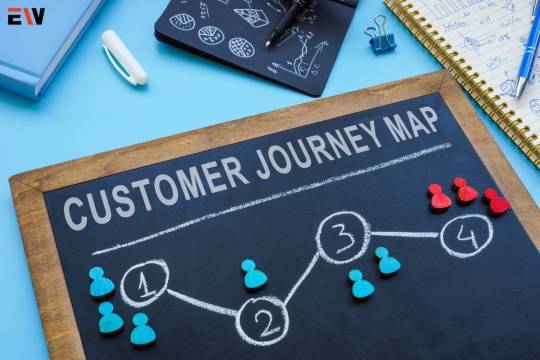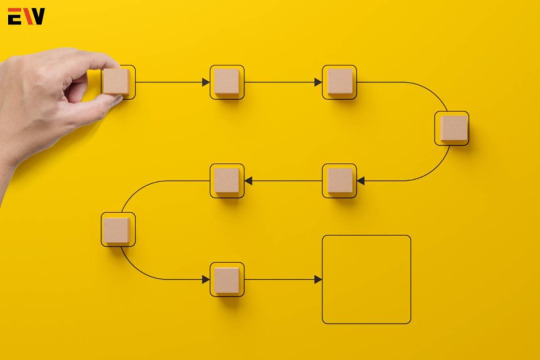#CXOptimization
Explore tagged Tumblr posts
Text
What Are the Key Features That Drive High First Contact Resolution in Omnichannel Services?
First Contact Resolution (FCR) is one of the most important metrics in omnichannel customer service. It measures the ability to resolve client issues in the very first interaction—without follow-ups, call-backs, or escalations. High FCR improves customer satisfaction, reduces costs, and strengthens brand credibility. According to SQM Group, a 1% rise in FCR equals a 1% improvement in customer satisfaction. In a multi-channel environment, this directly impacts business results.

1. Centralized Customer Data Across Channels
FCR starts with complete visibility. Agents must be able to view customer interactions across phone, chat, email, social media, and self-service tools. When all data is stored in one place, service becomes faster and more accurate. A Forrester report shows 68% of customers feel frustrated when they have to repeat themselves due to disconnected systems. A unified view enables smoother conversations and quicker resolutions.
2. Smart Routing and Agent Matching
Directing queries to the most suitable agent from the start improves FCR significantly. Intelligent routing systems use AI to match issues with agents who have the right skills and knowledge. This reduces call transfers and escalations. Genesys research shows that companies using skill-based routing see up to a 25% increase in FCR. The right match reduces response time and improves Omnichannel Customer Service
satisfaction.
3. Real-Time Support Tools for Agents
Real-time tools help agents respond faster and with more accuracy. AI-driven prompts, knowledge base suggestions, and sentiment analysis make it easier for agents to understand the issue and act immediately. When agents have access to a shared knowledge base, across all channels, they can provide consistent, correct answers—whether through chat, phone, or social support.
4. Proactive Communication Reduces Inbound Volume
Companies can help inbound traffic and increase FCR by detecting issues ahead of time and informing the customer of the problem in advance. Issues are resolved without customers having to contact them using alerts, Frequently Asked Questions, and real-time service upgrades. According to Aberdeen Group, implementing proactive support strategies decrease subsequent contacts by up to 20%.
5. Channel-Specific Setup & Optimization
Different channels of services are optimal when used with appropriate tools and workflow. Live chat is more effective when scripted pick-ups and typing previews are involved and social media care should have sentiment detecting tools and rapid tagging. As compared to the one-process-fits-all approach, optimizing each channel separately promptly resolves issues and results in an increased FCR.
6. Feedback-Driven Improvement
Tracking FCR in real time helps teams see what’s working and what isn’t. In an Omnichannel Customer Service environment, post-interaction surveys and automated reports help identify issues that weren’t resolved the first time—across voice, chat, email, and social channels. Companies that use FCR data to improve agent training and service design see better long-term results. Top teams treat FCR as a core performance KPI.
7. Smooth Transition from Bots to Humans
Automation is useful, but some problems need a human touch. When chatbots hand off to live agents, all the information should carry over—without the customer having to repeat their issue. Gartner reports that this kind of seamless handoff increases Omnichannel Customer Service
satisfaction by 15%. It also cuts down resolution time.
Omnichannel Customer Service Platforms That Support High FCR
Companies that want to improve FCR at scale need strong platforms. Suma Soft, Salesforce Service Cloud, Freshdesk, and Genesys Cloud offer end-to-end Omnichannel Customer Service.
High First Contact Resolution is not just a metric—it’s a customer experience standard. With the right omnichannel tools, businesses can reduce support costs, improve satisfaction, and strengthen brand trust.
#FirstContactResolution#OmnichannelSupport#CustomerExperience#CXStrategy#CustomerSatisfaction#SupportMetrics#DigitalCustomerService#CXOptimization#CustomerSupportSuccess#FCRMatters
2 notes
·
View notes
Text
#WebsiteRedesign#CustomerExperience#UIUXDesign#DigitalStrategy#WebDevelopment#UserEngagement#BusinessGrowth#TechInnovation#eCommerceTrends#CXOptimization
0 notes
Text
Navigating Success: A Comprehensive Guide to Customer Journey Mapping

Understanding and optimizing the customer experience is paramount to success. Enter the strategic tool known as “customer journey mapping,” a process that illuminates the various touchpoints a customer encounters throughout their interaction with a brand. In this comprehensive guide, we will explore the significance of customer journey mapping, its components, and the steps to create an effective map that can enhance customer satisfaction and drive business growth.
Understanding Customer Journey Mapping
Customer journey mapping is a visual representation of the entire customer experience, from the initial awareness stage to post-purchase interactions. It involves identifying and analyzing each touchpoint a customer has with a brand, aiming to gain insights into their thoughts, emotions, and behaviors at each stage. This holistic approach enables businesses to align their strategies with customer expectations, ultimately improving satisfaction and loyalty.
Components of Customer Journey Mapping
1. Touchpoints
These are the specific interactions a customer has with a brand, such as visiting the website, making a purchase, or contacting customer support. Identifying touchpoints is crucial for understanding where and how customers engage with the brand.
2. Channels
Channels represent the various platforms and mediums through which customers interact with the brand, including social media, email, website, and physical stores. Recognizing the channels used by customers provides insights into their preferences and habits.
3. Customer Actions

Understanding the actions customers take at each touchpoint is essential. This includes researching product information, comparing prices, making a purchase, and providing feedback. Recognizing these actions helps businesses tailor their strategies to meet customer needs at every step.
4. Emotional States
Customer emotions play a significant role in shaping their experience. Mapping emotional states at different touchpoints allows businesses to identify pain points and opportunities to enhance customer satisfaction. Emotions may range from excitement and trust to frustration or confusion.
5. Customer Pain Points
Pain points are areas of frustration or dissatisfaction within the customer journey. Identifying these pain points helps businesses address issues and streamline the customer experience, reducing friction and improving overall satisfaction.
6. Opportunities for Improvement
By analyzing the customer journey, businesses can identify areas for improvement and innovation. This might involve introducing new features, optimizing processes, or enhancing customer communication to better align with customer expectations.
Steps to Create an Effective Customer Journey Map
1. Define Your Customer Personas
Start by understanding your target audience. Create detailed customer personas that encompass demographics, preferences, and behaviors. This foundational step ensures your customer journey map is tailored to the needs and expectations of your specific audience segments.
2. Identify Touchpoints and Channels
Map out all the touchpoints and channels where customers interact with your brand. This includes online and offline interactions, from the initial awareness stage to post-purchase follow-ups.
3. Gather Customer Feedback
Actively seek feedback from your customers through surveys, reviews, and direct interactions. This qualitative data provides valuable insights into customer experiences, helping you identify pain points and areas for improvement.
4. Create a Visual Representation

Use visual tools such as flowcharts, diagrams, or infographics to create a visual representation of the customer journey. This makes it easier for teams across the organization to grasp the entire customer experience and align their efforts accordingly.
5. Analyze Customer Emotions
Consider the emotional states of customers at each touchpoint. Are they excited, frustrated, or indifferent? Understanding the emotional journey enables you to design strategies that evoke positive emotions and address areas of concern.
6. Highlight Pain Points and Opportunities
Identify pain points within the customer journey and prioritize them based on their impact on satisfaction. Simultaneously, pinpoint opportunities for improvement and innovation. This step sets the stage for strategic enhancements to the customer experience.
7. Collaborate Across Departments
Customer journey mapping is a collaborative effort that involves multiple departments within an organization. Bring together teams from marketing, sales, customer service, and product development to ensure a comprehensive and unified approach to improving the customer experience.
8. Implement Changes and Monitor Progress
Once insights are gathered, implement changes to address identified pain points and capitalize on opportunities. Continuously monitor customer feedback and key performance indicators to gauge the effectiveness of your initiatives.
Benefits of Customer Journey Mapping
1. Enhanced Customer Satisfaction
By understanding the customer journey, businesses can proactively address pain points and deliver a seamless experience, ultimately leading to increased customer satisfaction.
2. Improved Customer Loyalty
Mapping the customer journey allows businesses to build stronger connections with customers by providing personalized and relevant interactions. This, in turn, fosters customer loyalty and repeat business.
3. Optimized Marketing Strategies
Insights gained from customer journey mapping enable businesses to refine their marketing strategies. Targeted and timely communication can be developed, ensuring that customers receive the right message at the right touchpoints.
4. Increased Sales and Revenue
A positive customer experience contributes to higher conversion rates and increased customer lifetime value. By aligning strategies with customer expectations, businesses can drive sales and revenue growth.
5. Streamlined Processes

Customer journey mapping often reveals inefficiencies in internal processes. Addressing these inefficiencies not only improves the customer experience but also streamlines operations within the organization.
Conclusion
In the age of customer-centricity, understanding and optimizing the customer journey is a strategic imperative for businesses across industries. Customer journey mapping provides a holistic view of the customer experience, enabling organizations to identify opportunities for improvement, address pain points, and ultimately enhance customer satisfaction. By embracing this powerful tool, businesses can foster customer loyalty, drive revenue growth, and position themselves as leaders in delivering exceptional customer experiences.
#customerjourneymapping#CXoptimization#customerexperience#customerinsights#BusinessGrowth#customersatisfaction#BusinessStrategy#NavigateSuccess#EnhanceSatisfaction
0 notes
Text

Maximize efficiency with strategic contact center planning. See how CCaaS configuration, smart forecasting, and workforce optimization enhance customer satisfaction and drive business success. #ContactCenterPlanning #CCaaSConfiguration #CXOptimization
0 notes
Photo

Et je serai face à la mer qui viendra baigner les galets. Caresses d’eau, de vent et d’air. Et de lumière. D’immensité. Et en moi sera le désert. N’y entrera que ciel léger.
Et je serai face à la mer qui viendra battre les rochers. Giflant. Cinglant. Usant la pierre. Frappant. S’infiltrant. Déchaînée. Et en moi sera le désert. N’y entrera ciel tourmenté.
Et je serai face à la mer, statue de chair et coeur de bois. Et me ferai désert en moi. Qu’importera l’heure. Sombre ou claire…
Évasion, Esther Granek, Recueil De la pensée aux mots – 1997
#esthergranek#poetry#vehiculedévasion#CXoptimal#dessin#kidsplay#lego#legoduplo#robertv2020#drawingeveryday#quarantineart#confinement
0 notes